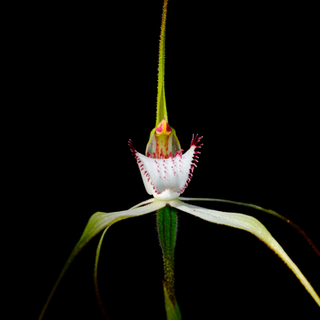The inaugural Great Southern Bioblitz has been and gone for the year, but it's echoes will no doubt resound for another orbit of the Earth, when we get to do it all over again!
What a massive first year! Three thousand observers participated in the Great Southern Bioblitz, collating over 90,000 observations from around the globe of more than 12,000 species! The umbrella project now represents an amazing and openly accessible display of citizen scientist biodiversity observations. This searchable database is a treasure trove for naturalists, educators, researchers and anyone interested in nature, just choose a project from any place in the world and explore the observations citizen scientists made of their local flora and fauna.
This is an incredible snapshot of the biodiversity of the southern hemisphere
To help us find and publish the most amazing observations you have taken, please 'fave' your own or other user's observations so they can be easily found on the project stats page.
Participation was greater than anything we could have anticipated. The incredible response from South America taking us all by surprise. Hundreds of new users to iNaturalist documenting their observations to the website. Lima in Peru had 229 participants with 6,485 observations, the Huila region in Columbia with 114 participants taking 3,506 observations, Quito & Pichincha in Ecuador had 144 participants with over 2,000 observations, and Brazil had nearly 2,000 observations including 168 species of birds.

A Swallow-tailed Hummingbird in Brazil - Diogo Luiz

Also from Brazil, a Chestnut-backed Antshrike - Carlos Dutra
Just check out the fun these guys from Colombia had on the weekend:
Not as surprising but nevertheless very impressive, was the ability of Cape Town to mobilise naturalists at short notice to get out and observe the natural world to share what they find. There is a staggering 16,066 observations of 2,370 species currently attributed to that region over the GSB weekend. Another fantastic contribution to the record of South Africa's biodiversity, further cementing their place as the global leaders of citizen science biodiversity surveys. Their neighbours at Garden Route also putting in a fantastic effort to take over 4,000 observations of around 1,500 species.

Check out this amazing picture of the extremely elusive Southern Caracal by Gigi Laidler (@gigilaidler).
Tony Rebelo (@tonyrebelo) made over 2,000 observations himself during the GSB - he is a champion of South African biodiversity knowledge (especially botanical), iNaturalist curator, and highly regarded facilitator to the local community of naturalists. It is certain that he plays a large role in the continual outstanding performances from the South African region. Here are some of Tony's observations from the GSB:
From top left: The Fynbos Lesser Double-collared Sunbird, Beetle on flower, Lessertia capensis, an unknown Phasmid, Pterygodium volucris, a Sarcophagid fly, a Satyrinid butterfly.
Still on that incredible continent, just slightly north - From Zimbabwe, Daniel Rautenbach (@spidermandan) along with 14 other keen observers observed some incredible African flora and fauna , like this Tiger Thick-toed Gecko:

Botswana were newcomers to the bioblitz stage but they put in a great effort to observe some incredible species - yes these are big and showy flagship animals, but they are no doubt beautiful - and listed as a vulnerable species. Savannah Elephants, observed by @kyledenobrega from African Guide Academy.

Everyone should be proud of this incredible effort. We have managed to come together, digitally, during one of the most drastic and challenging years of our lives.
We know the challenge for biodiversity protection will go on. Movements like these that involve and encourage people to understand, appreciate and explore biodiversity around them have an important part to play, if we are going to turn the tide against the mass extinction of species currently happening around the planet.
Now to my home grounds, the Surf Coast, we have been bioblitzing for a few years now with modest but steady increases in participation and observations each time. We totalled over 400 species for the GSB which is our best result yet. This year there were some new observers coming to join the party, including the legendary local Marg Macdonald who wrote the book on the local plants and orchids, and contributed 40 observations.
There were shades of the Extreme Weather Sore Back Bioblitz back in early August with the weather turning on us at almost the precise moment the GSB started, with driving rain and snow(!) to contradict the perfect weather in the lead up to (and mostly since) the event.
One of the main driving forces behind the spring timing of the Great Southern Bioblitz was so that we could properly capture and observe the flowering plants. Along with Gariwerd National Park, the Surf Coast is one of the best places in Victoria to see wildflowers. A total of 240 plant species were seen including 31 orchid species.
(From left to right - Large White Spider - Caladenia venusta, Eastern Mantis - Caladenia tentaculata, Waxlip - Caladenia (syn.Glossodia) major, Large White getting a hug from Heart Lipped - Caladenia cardiochila, Maroonhood - Pterostylis pedunculata, Donkey Orchid -Diuris orientis)
I had a great time walking solo along single track, attempting to photograph butterflies or dragonflies wildly flitting about (when the sun briefly made an appearance). At one stage a Laughing Kookaburra stooped and speared something with its beak, I rushed the camera to my eyes, and pointed the telephoto lens in its direction.. but whatever it was went down the gullet before I could get a picture, 'that would have been cool' I may have muttered.
Here are some of my observations from the Surf Coast project:

I was thrilled to spot this immature White-bellied Sea Eagle circling low over Distillery Creek at Aireys Inlet, given how the ducks started to fly away and sound the alarm, it may have been hunting them! This is the offspring from one of just two breeding pairs in this region.
Birds are an active feature in spring and there are some top notch birding sites around the Surf Coast. If you've got the time to spend, listening, creeping, and patiently waiting, bird photography is certainly one of the most rewarding and exciting engagements with nature you can experience. Some may dislike this comparison, but to me the duality with hunting can't be escaped, the thrill of the stalk, taking aim, and firing. And the feeling of reward after, or the allure of a near miss. The big difference is I'm not leaving anything dead, I've captured a special moment and a memory to share, and cherish.
From top left: Eastern Yellow Robin on an Ironbark, Crested-shrike Tit, Golden Whistler, Rufous Whistler, White-naped Honeyeater, Gang-Gang Cockatoo, Hooded Plover, Blue-winged Parrot - and my first ever Crescent Honeyeater!
The rough seas and intense cold didn't make it particularly inviting for diving and using my new underwater camera. The biodiversity wasn't going to observe itself though! So I squeezed on the wetsuit and gave it a go. Of course the visibility was terrible, but the huge effort was rewarded with this single observation of a Yellow-eyed Mullet. Worth it!

Others managed to get better quality photos of fish from above the water looking in, like this Smooth Toadfish observed by Alison Watson:

Actually, just walking along the beaches yeilded more fish than I got by diving in..
Top is a Common Gurnard Perch, Neosebastes scorpaenoides. Bottom is a Meuschenia species, thought to either be a Brown-striped or Blue-lined Leatherjacket.
For me the GSB was another chance to survey and enjoy the rich biodiversity I am privileged to live amongst, and I hope there will be more Surf Coasters joining in the opportunity next year.
Everyone should be proud of this incredible effort. We have managed to come together, digitally, during one of the most drastic and challenging years of our lives. We know the challenge for biodiversity protection will go on. Movements like these that involve and encourage people to understand, appreciate and explore biodiversity around them have an important part to play if we are going to turn the tide against the mass extinction of species currently happening around the planet.
There are many reasons why I use iNaturalist to store and document my biodiversity observations, but I would be really interested to hear about yours.
If I could ask people who were involved in this years GSB some questions, they would be:
* Did you enjoy it?
* What did you get out of it?
* Why did you do it?
and,
* Will you do it again?
Feel free to comment your answers below.
This is a profile of a new iNaturalist user, @jadeybird, who signed up especially to contribute to the GSB and put in an outstanding effort to finish top of the leaderboard for the Greater Melbourne Bioblitz project, in both number of observations (414), and number of species (142). Well done Jade!

Did you enjoy participating in the GSB?
Yes! It was fun getting out and about (within my covid lockdown zone!), walking in nature and spotting animals and plants. My 7 year-old daughter got into it too and we enjoyed hunting for bugs and putting up a screen for moths at dusk together, it was lovely to get her involved in some citizen science!

What were your favourite observations?
My very last observation was pretty special, I had just packed up my camera and was getting in my car when I spotted some movement in the corner of my eye and thought I would quickly investigate - it was an echidna!
I also enjoyed taking photos of birds, the very small fast moving ones are a challenge to photograph but it was very rewarding when I managed to get a clear focused shot!


Are you looking forward to next year?
Yes definitely! I've already started researching less well-known local bush walks, especially those known for native orchids. I'm also hoping for some better weather, it seemed like all of the wildlife that is usually in my neighbourhood was hiding from the cold and rain this year!
Why do you think people should get involved?
It's a really interesting and rewarding thing to do. I've found that when I go for walks now I look at everything a bit differently and notice more of the amazing biodiverse nature around me.
I'm feeling the mutual love for nature around the whole Southern Hemisphere right now!
The GSB team would like to thanks all the regional project organisers, and thanks to absolutely everyone who contributed observations and made this project a success. I am looking forward to 2021 (in more ways than one!).
Cheers,
Pete Crowcroft (@possumpete) and the whole GSB organising team.
(Pete is an environmental educator from the Surf Coast in Victoria, Australia and works for the Great Ocean Road Coast Committee)





















































コメント